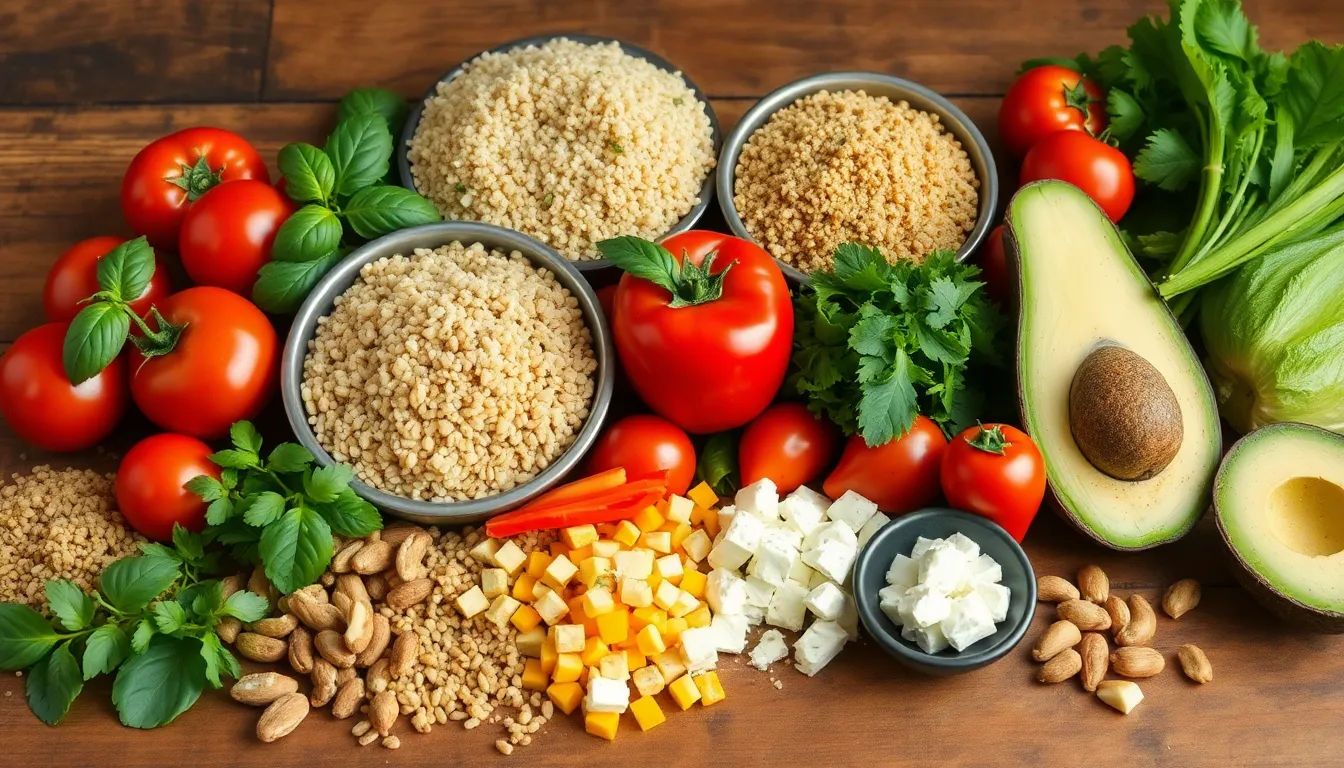Table of Contents
ToggleFalotani isn’t just food; it’s a culinary adventure that’ll tickle your taste buds and impress your friends. Picture this: a dish that’s as unique as it is delicious, blending flavors and textures in a way that makes your mouth dance with joy. If you’ve ever wanted to elevate your cooking game and become the star of your next dinner party, mastering falotani is the way to go.
Overview of Falotani
Falotani stands out in the culinary world due to its unique ingredients and preparation methods. This dish typically features seasoned grains, rich spices, and a variety of fresh vegetables. Its vibrant colors and aromas not only entice the palate but also create an inviting atmosphere for any gathering.
Preparation of falotani typically involves a careful blending of flavors. Chefs often start by toasting the grains, enhancing their nuttiness and providing a deeper flavor profile. Fresh herbs like basil and cilantro frequently complement the dish, adding bursts of freshness.
Serving falotani allows for creativity and customization. Guests can personalize their portions with toppings such as roasted nuts or a drizzle of tangy sauce. This interactive aspect makes it a perfect centerpiece for dinner parties, encouraging everyone to participate in their culinary experience.
Nutritionally, falotani offers diverse benefits. It commonly includes whole grains, providing essential fiber, proteins, and vitamins. With thoughtful ingredient selection, this dish can cater to various dietary preferences, including vegetarian and gluten-free options.
Culinary traditions across various cultures influence falotani, showcasing its versatility. Variants seen in Mediterranean and Middle Eastern cuisines highlight the adaptability of ingredients. Each version introduces a unique twist, ensuring diners experience a surprising taste journey.
Overall, falotani represents a celebration of flavors and creativity in cooking. Its potential to impress guests lies not just in taste but also in the shared experience it fosters around the dining table. This dish inspires home cooks to experiment and elevate their culinary skills, making every meal an adventure.
Ingredients for Cooking Falotani

Cooking falotani requires a balance of essential and optional ingredients to create its unique flavor profile. Attention to the quality and freshness of each component enhances the overall dish.
Essential Ingredients
Grains form the foundation of falotani, typically including quinoa, bulgur, and farro for their nuttiness. Fresh vegetables elevate the dish, with tomatoes, bell peppers, and zucchini adding vibrant colors and textures. Herbs like basil and cilantro infuse the recipe with freshness and aroma. Spices such as cumin and coriander provide warmth, complementing the grains and vegetables beautifully. Notes of acidity from lemon juice or vinegar brighten the flavors, making each bite more refreshing.
Optional Ingredients
Roasted nuts, such as pine nuts or almonds, offer a delightful crunch and richness. A variety of cheeses, including feta or goat cheese, can add creaminess and depth to the dish. Diced avocados provide extra creaminess alongside nutritional benefits. For additional seasoning, chili flakes can amplify spiciness for those who enjoy heat. Dressing options like tahini sauce or yogurt drizzles introduce tanginess and creaminess. Finally, garnishing with microgreens or sprouts can enhance presentation while adding nutritional value.
Step-by-Step Instructions for Cooking Falotani
Cooking falotani involves a straightforward approach with specific steps. Each stage contributes to building a flavorful and nutritious dish.
Preparation
Start by gathering essential ingredients. He or she should rinse grains like quinoa or bulgur under cold water. Chopping fresh vegetables, such as tomatoes and bell peppers, into bite-sized pieces is necessary. Set these aside for later use. Fresh herbs like basil and cilantro can enhance flavor; thus, washing and finely chopping them is essential. Spices, particularly cumin and coriander, often add depth, so have them ready for the cooking process. Keep optional ingredients like roasted nuts or cheese nearby for personalizing servings.
Cooking Process
Begin cooking by toasting grains in a dry skillet for about five minutes until fragrant. Transfer the toasted grains to a pot, adding water or broth according to package instructions. Bring the mixture to a boil, then reduce the heat to low and cover for necessary cooking time until tender. While grains cook, heat olive oil in a pan. Incorporate the chopped vegetables, stirring them for about five to seven minutes. Add freshly chopped herbs and spices to the cooked vegetables for flavor enhancement. Combine the grains and vegetable mixture, allowing everything to heat through. Adjust seasoning as needed before serving.
Tips for Perfecting Your Falotani
Focus on the quality of ingredients to enhance flavor. Fresh vegetables and high-grade grains, such as quinoa or farro, make a significant impact on taste. Experiment with spices to find the perfect balance; cumin and coriander can elevate falotani to new levels.
Toast the grains before cooking to unlock deeper flavors. Heating them in a dry pan for a few minutes brings out nuttiness. Adjust the cooking liquid as desired; using broth instead of water adds richness to the dish.
Incorporate a variety of textures for visual and palate appeal. Combine crisp vegetables with soft grains to create a satisfying experience. Use vibrant herbs like basil and cilantro for both flavor and color; they add freshness that complements the dish.
Adjust seasoning gradually throughout the cooking process. Tasting along the way ensures balanced flavors. When ready to serve, consider adding nuts for crunch or a drizzle of tangy sauce for extra zest.
Create opportunities for personal touches during serving. Offer optional toppings, such as diced avocado or crumbled cheese, to encourage guests to customize their bowls. Presentation matters; arranging falotani in layers can enhance its visual appeal at the table.
Lastly, allow time for the flavors to meld after cooking. Letting it sit for a few minutes before serving can intensify the dish’s overall taste. With these tips, falotani can become not just a meal but a centerpiece of any gathering.
Serving Suggestions for Falotani
Serving falotani opens up a world of possibilities. Creating a visually appealing platter enhances its overall presentation. Consider using a mix of vibrant vegetables such as cherry tomatoes, bell peppers, and zucchini. Mixing textures is essential; crunchy roasted nuts add contrast alongside creamy cheeses.
Enhancing flavor may involve drizzling tangy sauces like tahini or yogurt on top. Offering fresh herbs as a garnish brightens the dish visually and adds freshness. Arranging a build-your-own falotani bar allows guests to customize their servings, making the dining experience interactive.
Including side dishes can complement falotani effectively. Pairing it with a light salad featuring mixed greens and citrus dressing contrasts nicely with the rich and hearty grains. Roasted or grilled vegetables serve as another excellent accompaniment, enriching the meal’s flavor profile.
Accompanying beverages also play a crucial role. Serving chilled herbal teas provides a refreshing palate cleanser, while light wines pair well, enhancing the overall dining experience. Creating a cohesive meal encourages guests to enjoy the variety of flavors.
For a festive touch, consider offering various toppings on the side. Dividing options like diced avocados, olives, or spicy pickles caters to diverse tastes. Guests appreciate having choices, allowing them to personalize their falotani experience.
Incorporating these serving suggestions not only elevates falotani but also encourages creativity at the dining table. Emphasizing interaction through shared components enhances social engagement during gatherings. Cooking transforms into a celebration of flavors, making each meal memorable.
Falotani is a culinary gem that invites creativity and exploration in the kitchen. Its vibrant flavors and textures not only impress guests but also provide a platform for personal expression. By embracing the art of cooking falotani, home cooks can elevate their skills and create memorable dining experiences.
The versatility of falotani makes it suitable for various occasions, from casual gatherings to elegant dinner parties. With its rich nutritional profile and adaptability to dietary preferences, it stands out as a dish that everyone can enjoy.
As cooks experiment with ingredients and presentation, they transform each meal into a celebration of flavors, making falotani a cherished addition to any culinary repertoire.







